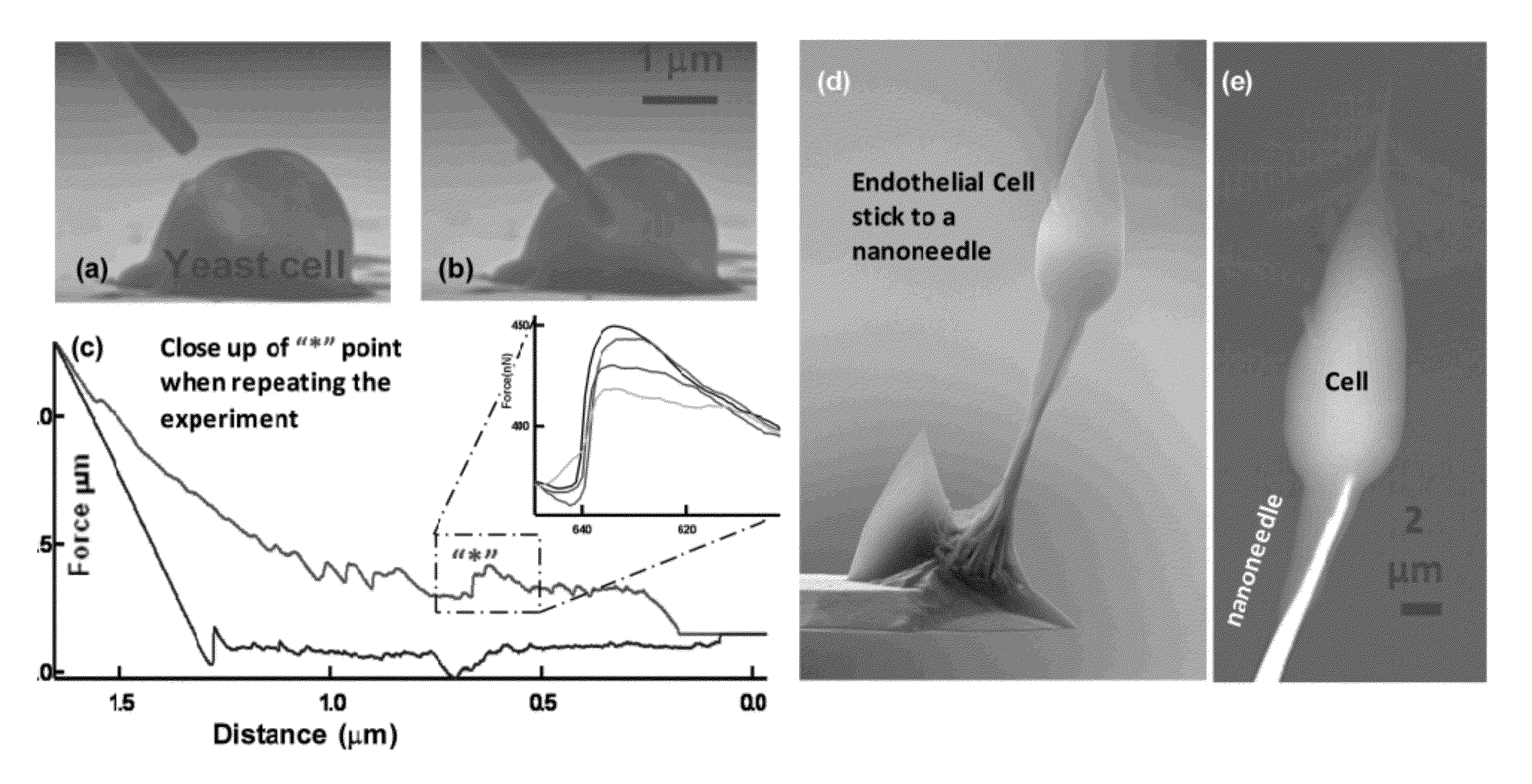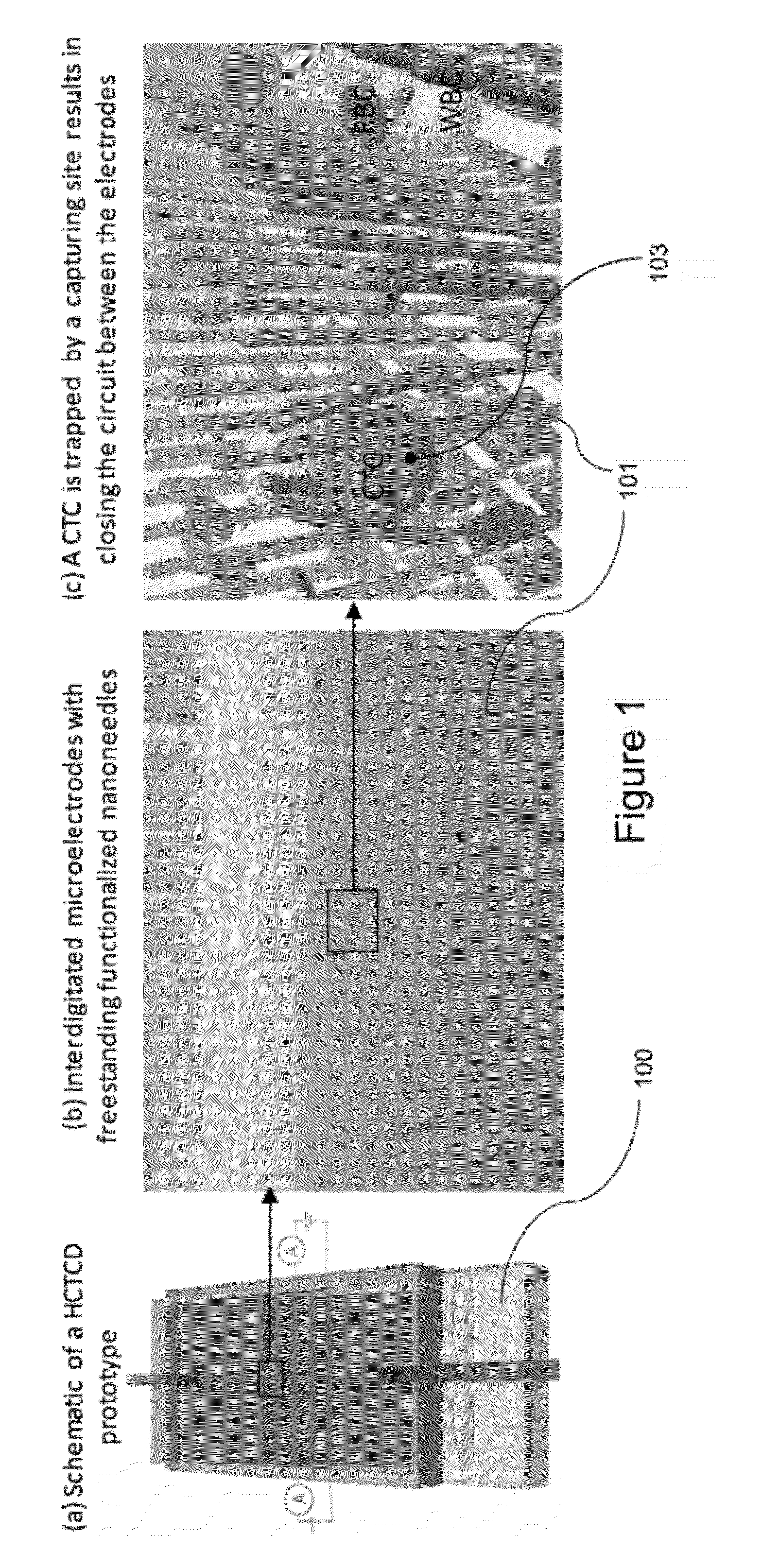Apparatus and Methods for Detection of Tumor Cells in Blood
a technology of tumor cells and blood, applied in the field of blood tumor cell detection apparatus and methods, can solve the problems of inefficient colonization of distant organs by ctc, discontinuous shedding process, and increased mortality of cancer cells,
- Summary
- Abstract
- Description
- Claims
- Application Information
AI Technical Summary
Benefits of technology
Problems solved by technology
Method used
Image
Examples
Embodiment Construction
[0044]One embodiment of the present invention, HCTCD, can reliably, and reproducibly capture and count (using electrical signal detection) the number of CTCs as low as 1 to 10 cells in 1 ml of pure blood cells. In one embodiment, HCTCD consists of dense array of high aspect ratio freestanding metallic nanoneedles functionalized with antibodies (e.g. anti-EpCAM).
[0045]Typically, the force of a single protein binding event to its receptor is in the order of ˜10-11 nano-Newton (nN). Therefore, the attachment force between a CTC and functionalized nanoneedles (where more than 103 protein binding events occur) is more than a few tens of nano-Newton (nN). Now, considering a nanoneedle (50 μm long and 300 nm diameter) with a spring constant of˜3×10−3 N / m, the force required to bend a nanoneedle by a distance of 5 μm is˜15 nN. Therefore in this example the specific binding force is enough to bend the needles a few micrometer and complete the circuit between the two opposite electrode which ...
PUM
| Property | Measurement | Unit |
|---|---|---|
| Electrical conductivity | aaaaa | aaaaa |
| Diameter | aaaaa | aaaaa |
| Electrical resistance | aaaaa | aaaaa |
Abstract
Description
Claims
Application Information
 Login to View More
Login to View More - R&D
- Intellectual Property
- Life Sciences
- Materials
- Tech Scout
- Unparalleled Data Quality
- Higher Quality Content
- 60% Fewer Hallucinations
Browse by: Latest US Patents, China's latest patents, Technical Efficacy Thesaurus, Application Domain, Technology Topic, Popular Technical Reports.
© 2025 PatSnap. All rights reserved.Legal|Privacy policy|Modern Slavery Act Transparency Statement|Sitemap|About US| Contact US: help@patsnap.com



